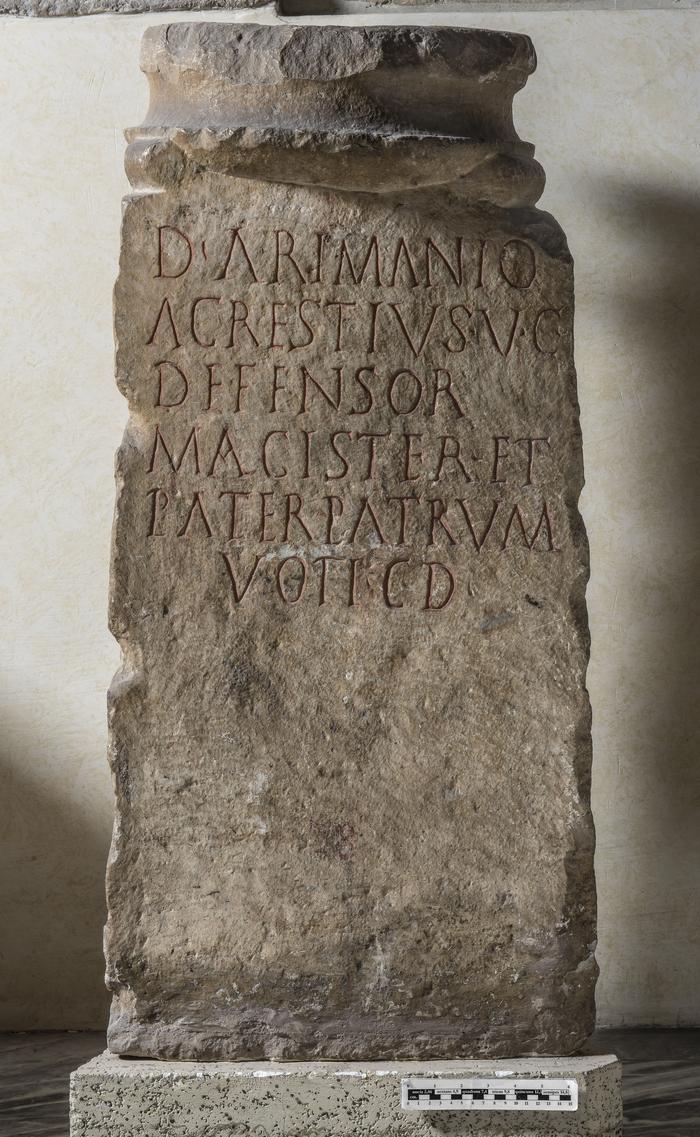
Agrestius
Clarissimo, defensor civitatis, magister and Pater patrum.
Biography
of Agrestius
TNMP 100
Explicit disclosure of social rank and Mithraic grade was clearly important for those at the top, a circumstance which compels us to ask both why this was so, and who occupied the lower grades so carefully but anonymously recorded in the Campus Martius inscriptions. The context of the mithraea and the Mithraic dedications offers insight.
I am at a loss to explain the lack of the tria nomina here. Bloch, op. cit. (n.36) did not include “Agrestius” on his chart of viri clarissimi. P. Herz, “Agrestius v(ir) c(larissimus),” ZPE 49 (1982) 221-24 convincingly established a terminus post quem of 364 for Agrestius but offered no thoughts on his name.
References
- A. B. Griffith (1993) ‘Mithraism in the private and public lives of 4th-c. senators in Rome.’ The archaeological evidence for Mithraism in imperial Rome
Mentions
Altar to Arimanius of the Esquilino
TNMM 481
This altar mentioning the god Arimanius was found in 1655 at Porta San Giovanni, on the Esquilino.
Mitreo dell’Esquilino
TNMM 83
In a house from the time of Constantine, a Lararium was found with a statue of Isis-Fortuna. The Mithraeum was a door next to it, on a lower room.


![Bull. della comm. arch. comm., 1885, p. 27 et pl. IV-V; cf. Lanciani, Ancient Rome, 1890, p. 192. Fig. 25. [TMFMM] Bull. della comm. arch. comm., 1885, p. 27 et pl. IV-V; cf. Lanciani, Ancient Rome, 1890, p. 192. Fig. 25. [TMFMM]](https://www.mithraeum.eu/album/monumenta/mitreo_esquilino_004.jpg)
Comments